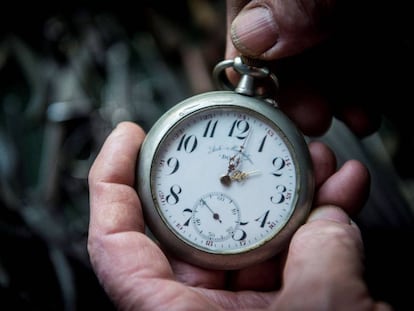Time zones: When will the clocks change in Spain?
March 31 will see watches go forward by an hour, but wasn’t this year was meant to mark the abolition of the practice? The European Commission has opted to delay that move until 2021

The clocks in Spain will move forward one hour on March 31 to mark the beginning of Daylight Saving Time. In principle, March 31 was meant to be the last time the clocks changed in the European Union, but the European Parliament has asked to delay the move until 2021.
A poll showed that most Spaniards would prefer Daylight Saving Time all year round
Speaking on Friday at a press conference, Spain’s Education Minister Isabel Celaá said that “no changes” would be made to the current system.
According to Celaá, the expert commission, tasked with reviewing a time zone change, was unable to reach any “conclusive resolution” due to the “large impact” the measure would have on cultural and economic sectors.
Other European countries have yet to reach a decision on whether to abolish the biannual clock change, and the issue is likely be a subject of an ongoing study, said Celaá.
In addition, a survey conducted by the Center of Sociological Investigations (CIS), a research institute in Madrid, found that most Spaniards prefer Daylight Saving Time (or summer time) despite the fact that experts recommend staying on standard (or winter) time all year round.
Is Spain in the wrong time zone?
The time change brings up another related issue that has been the subject of much debate in Spain: whether the country should remain on Central European Time (CET) or go back to Coordinated Universal Time – the successor to Greenwich Mean Time or GMT, the time zone in which it naturally falls.
Spain is in western Europe, the same as Portugal, the United Kingdom and France – that is to say, one hour behind central Europe. But in 1942, at the height of World War II, Germany changed occupied France's clocks to match Berlin time, while Britain, Portugal and Spain followed suit, albeit for different reasons.
The former meant to take advantage of the long summer evenings to increase productivity, particularly on farms, as well as to avoid confusion with its allies in Europe; Spain's decision was seemingly a show of loyalty to Hitler and recognition that Germany was now the new master of the continent.
At the end of the war, in 1945, Britain and Portugal returned to GMT, while France and Spain remained an hour ahead. France's decision made sense on the basis that most of its land mass falls within CET anyway, but that is not the case with Spain.
The time change is due to an EU directive, 2000/84/CE, which says that on the last weekend of October, the clocks turn back one hour, and are pushed forward again on the last weekend of March.
The idea is to adapt our bodies to natural light and save energy, but many people doubt whether any significant savings actually take place. Studies analyzed by the European Commission suggest marginal savings of 0.5% to 2.5% in electricity usage.
The European Commission agreed on February 8 to do an exhaustive review on the value of continuing to change the time twice a year, and has promoted ending the practice in 2019. The time change is said to affect people’s biorhythms and can be particularly upsetting for the elderly and children. A study by the European Parliament cites medical studies that say Daylight Saving Time can disturb a person’s Circadian rhythm, the 24-hour cycle influenced by light, and impact their health.
EU member states must decide by the end of April 2020 whether they will stay in the summer or winter time. If they opt for Daylight Saving Time, the last time change will take place in March 2021, while the countries who choose to stay in winter time will change their clocks for the last time in October 2021.
English version by Asia London Palomba.
Tu suscripción se está usando en otro dispositivo
¿Quieres añadir otro usuario a tu suscripción?
Si continúas leyendo en este dispositivo, no se podrá leer en el otro.
FlechaTu suscripción se está usando en otro dispositivo y solo puedes acceder a EL PAÍS desde un dispositivo a la vez.
Si quieres compartir tu cuenta, cambia tu suscripción a la modalidad Premium, así podrás añadir otro usuario. Cada uno accederá con su propia cuenta de email, lo que os permitirá personalizar vuestra experiencia en EL PAÍS.
¿Tienes una suscripción de empresa? Accede aquí para contratar más cuentas.
En el caso de no saber quién está usando tu cuenta, te recomendamos cambiar tu contraseña aquí.
Si decides continuar compartiendo tu cuenta, este mensaje se mostrará en tu dispositivo y en el de la otra persona que está usando tu cuenta de forma indefinida, afectando a tu experiencia de lectura. Puedes consultar aquí los términos y condiciones de la suscripción digital.
More information
Archived In
Últimas noticias
Most viewed
- Sinaloa Cartel war is taking its toll on Los Chapitos
- Oona Chaplin: ‘I told James Cameron that I was living in a treehouse and starting a permaculture project with a friend’
- Reinhard Genzel, Nobel laureate in physics: ‘One-minute videos will never give you the truth’
- Why the price of coffee has skyrocketed: from Brazilian plantations to specialty coffee houses
- Silver prices are going crazy: This is what’s fueling the rally










































